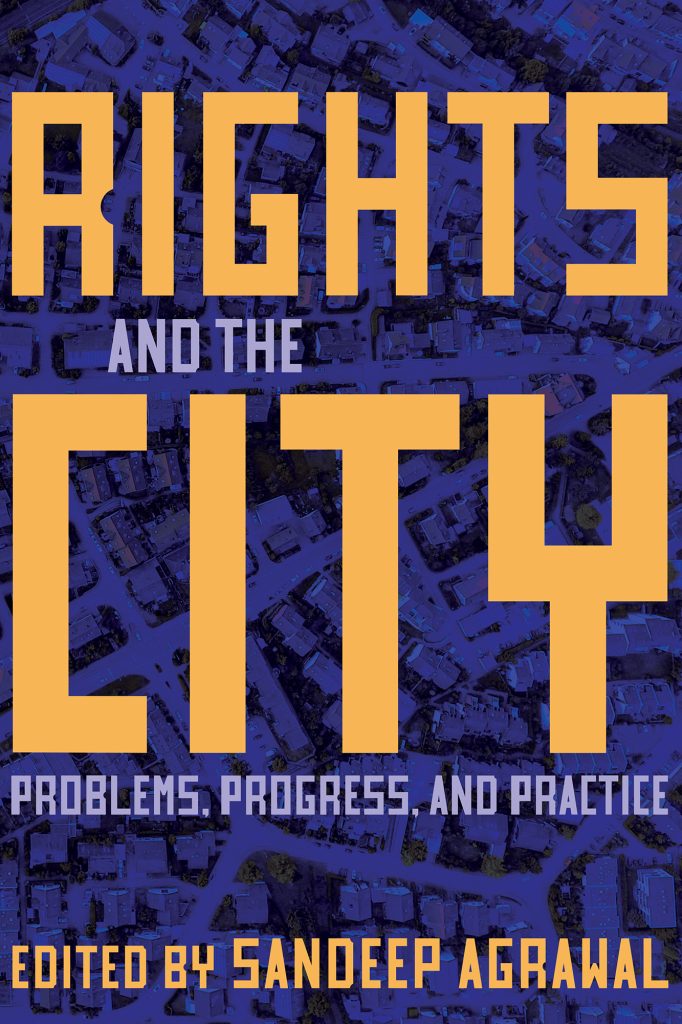A guest post by Dr Sandeep Agrawal, Professor and Inaugural Director of the School of Urban and Regional Planning at the University of Alberta, excerpted from Chapter 3 of his edited collection, Rights and the City: Problems, Progress, and Practice.

This chapter presents a broad inquiry into the changes that occurred on the rights front between 1867 and 1982, and the implications these changes have had on cities and planning at the local level. Discrimination was embedded in Canadian society, with racism, sexism, ableism, and xenophobic views often seen as the norm. These discriminatory ideas were reflected in government legislation and policies, as well as in court decisions (see chronology of government legislation below). Limited rights inscribed in the Constitution Act of 1867, narrow interpretations of the Constitution by the judiciary, and, of course, overtly discriminatory laws were key reasons for the prevailing situation.
At the municipal level, discrimination manifested mainly in the form of (a) race-based restrictive covenants; (b) limited or no rights for women or minorities in municipal matters; (c) infringements on freedoms of speech, religion, assembly, or political association; and (d) the imposition of additional municipal taxes and restrictive use of public facilities on people of colour. Some of these issues were challenged in court but with mixed results and little or no changes in federal or provincial legislation
or practice on the ground.
From 1867 until the 1950s, judicial review of municipal bylaws was primarily based on the founding principles of the Canadian Confederation: namely, the supremacy of Parliament and federalism. These were weak arguments, however, when it came to defending the civil or human rights of all people, especially those rights relating to local issues such as housing, use of municipal facilities, municipal taxes,
and freedom of religion. Court decisions strictly followed principles of federalism as set out in the Constitution, and municipalities played virtually no role in political or legislative affairs for approximately a century following Confederation. The judiciary saw its role as an arbiter of the division of powers when an issue arose. Generally, the courts were limited to deciding “whether the ‘correct’ level of government had acted,” in accordance with the categories of legislative powers set out in Sections 91 and 92 of the BNA Act, and “not whether any level of government could act” (Monahan, Shaw, & Ryan, 2017, p. 15). Eventually provincial legislation and statutes outlawed most discriminatory practices. Thereafter, the emergence of the Charter was largely responsible for eliminating many long-standing discriminatory practices.61
The early federal and provincial rights statutes in the 1960s and 1970s, though not that strong, helped to guide future legislation. These legislative changes mirrored changing societal attitudes and helped pave the way to strong rights protection at all levels. The adoption of the Charter and repatriation of the Constitution in 1982, together with the enactment of the quasi-constitutional forms at the federal, provincial, and territorial levels, helped consolidate human rights for all Canadians.
The 1982 amendment to the Constitution shifted the supremacy of Parliament to the Charter (Richard, 2005), so that Parliament is no longer supreme in its law-making authority. Legislation had to abide by the Charter and the Constitution and can now be challenged in the courts. The judiciary can evaluate government legislation against the Charter, while interpreting the Charter and the repatriated Constitution in possibly new ways (Black-Branch, 1997). However, critics allege that the Charter grants too much power and discretion to the judiciary (Sharpe & Roach, 2017; Smithey, 2001).
This is not to say that Canada has now reached a perfect state. Legal challenges to human rights violations are on the rise. Issues surrounding lack of affordable housing, universal accessibility, Indigenous and other minority rights, and freedom of religion still confound municipalities (Agrawal, 2020). In addition, new issues, such as locations of safe injection sites, methadone clinics, and cannabis dispensaries, have also come to the fore (Agrawal, 2018). Having legal and legislative human rights protections is only one piece of a larger puzzle; the rest remains with changing the deeply held institutionalized and systemic biases in Canadian society. We have come a long way in terms of human rights, but there is still a long way to go.
